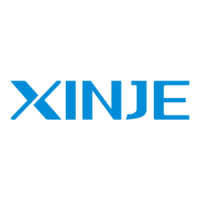The first clock soft component address
The second clock soft component address
The third clock soft component address
PLC real time clock information first address
The compare result first address
3. suitable soft component
*Notes: D includes D, HD; TD includes TD, HTD; CD includes CD, HCD, HSCD, HSD;
DM includes DM, DHM; DS includes DS, DHS.
M includes M, HM, SM; S includes S, HS; T includes T, HT; C includes C, HC.
TCMP D20 D21 D22
M0
X0
D·
S1·
S2·
S3·
D20
M0
M1
M2
D30
TRD D30
S4·
D22D21
D30
D32D31
D20 D22D21
D30 D32D31
D20
D22D21
D30
D32D31
=
<
>
TRD will read the present clock information in D30~D36 (year, month, day, hour, minute,
second, week).
X0 from OFF to ON, TCMP worked. Compare the three registers starting from S4 to three
registers S1, S2, S3 (year, month, day). When S1, S2, S3 is larger than S4 clock, M0 is ON.
When S1, S2, S3 is equal to S4 clock, M1 is ON. When S1, S2, S3 is smaller than S4 clock,
M2 is ON.
Even X0=OFF to stop instruction TCMP, M0~M2 still keep the
state before X0 become OFF.

